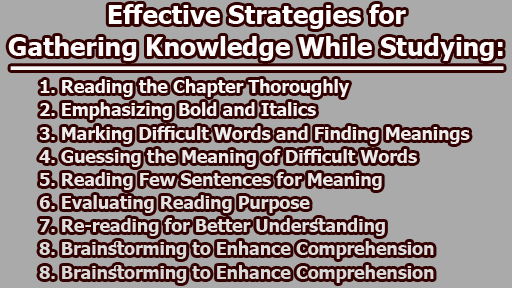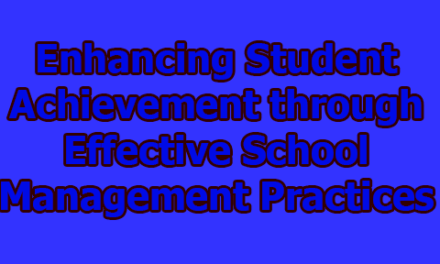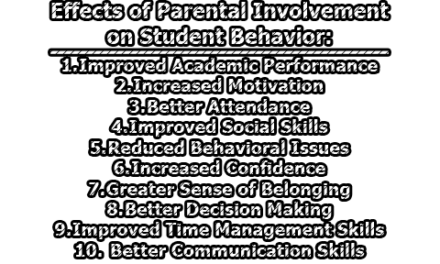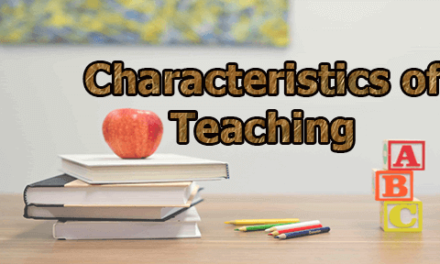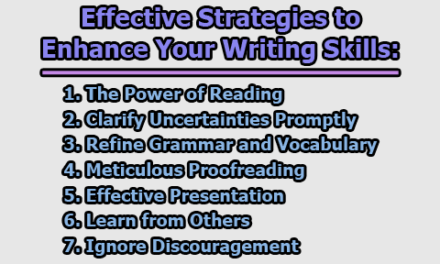Effective Strategies for Gathering Knowledge While Studying:
Studying is a vital process in the pursuit of knowledge and academic excellence. To make the most of our study sessions, it is essential to adopt effective strategies that enhance comprehension and retention of the material. This guide aims to provide students with an outline of effective strategies for gathering knowledge while studying. By incorporating these strategies into your study routine, you can significantly improve your understanding of the subject matter and excel in your academic endeavors.
1. Reading the Chapter Thoroughly: When embarking on your study session, it is essential to approach the chapter with a mindset of thoroughness. Reading the chapter more than once can significantly improve your understanding and retention of the material. During the first read-through, try to get a broad overview of the content. Focus on identifying the main topics, headings, and subheadings. Pay attention to the introductory and concluding paragraphs of each section, as they often provide an outline of the chapter’s key points.
During the second and third reads, delve deeper into the details. Take your time to absorb the information presented and connect it with what you already know. As you read, consider the flow of the chapter and how each section relates to the others. If there are any complex concepts or unclear passages, don’t rush past them. Take a moment to analyze and grasp their meaning before moving forward.
2. Emphasizing Bold and Italics: Bold and italicized text serves as signposts within the chapter, guiding you toward important information. When you encounter such formatting, pause and consider why the author chose to highlight those specific words or phrases. Often, these elements indicate key concepts, definitions, or crucial arguments that form the backbone of the chapter’s content.
As you identify bold and italicized text, take notes or highlight them for later reference. Summarize the highlighted points in your own words to reinforce your understanding. Additionally, use these markers as anchor points for easy review when revisiting the chapter later on.
3. Marking Difficult Words and Finding Meanings: Encountering unfamiliar or challenging words is a common occurrence while studying. To address this, make it a habit to underline or mark any such words as you read. Once you’ve completed the chapter or a section, take the time to look up the definitions of these words in a dictionary or through an online search. Understanding the meaning of these terms is crucial for fully comprehending the content.
When looking up definitions, pay attention to the word’s context within the sentence and paragraph. This context can offer additional insights into the word’s usage and nuances. Additionally, consider creating a vocabulary list or flashcards for the words you find challenging, allowing you to review and reinforce their meanings regularly.
4. Guessing the Meaning of Difficult Words: Before resorting to a dictionary, challenge yourself to infer the meanings of difficult words from the context in which they appear. Often, the surrounding sentences or the subject matter of the chapter can provide clues to the word’s definition. This exercise not only improves your vocabulary but also sharpens your ability to deduce information from the text.
Make a note of your guessed definitions alongside the actual definitions you find in the dictionary. Compare the two to see how accurate your inferences were. If you guessed correctly, it reinforces your understanding. If you guessed incorrectly, analyze why your inference was off, and use this as a learning opportunity.
5. Reading Few Sentences for Meaning: When dealing with extensive or complex paragraphs, it can be time-consuming to read them in their entirety multiple times. In such cases, try focusing on the first and last sentences of the paragraph to capture the main idea. Often, these sentences provide a concise summary or introduction to the paragraph’s content.
By adopting this approach, you can quickly grasp the essential points without compromising your comprehension. However, keep in mind that this technique is most effective when used selectively for longer paragraphs. For more nuanced discussions, it is still necessary to read the entire paragraph or section.
6. Evaluating Reading Purpose: Before beginning each study session, clearly define your reading purpose. Establish what specific knowledge or information you hope to gain from the chapter. Having a clear purpose in mind enhances focus and helps you direct your attention to the most relevant parts of the text.
As you read, periodically assess whether your reading purpose is being fulfilled. If you find yourself veering off track or getting lost in tangential details, remind yourself of your initial objective. Adjust your reading pace and approach accordingly to stay on target.
7. Re-reading for Better Understanding: Some concepts or sections of the chapter may be particularly complex or challenging to comprehend fully. In such cases, don’t hesitate to re-read those passages multiple times. Repeated exposure to the material reinforces memory and understanding.
As you re-read, actively engage with the text. Take notes, ask questions, and seek clarification on any confusing points. If possible, discuss the challenging content with peers or teachers to gain different perspectives and insights.
8. Brainstorming to Enhance Comprehension: After completing a chapter or section, engage in post-reading brainstorming to reinforce your understanding and retention of the material. Summarize the main ideas in your own words and create outlines or mind maps to visualize the connections between concepts.
Take the opportunity to formulate questions related to the content. Ask yourself how the information fits into the broader context of the subject or how it relates to real-life situations. Brainstorming promotes active learning and critical thinking, deepening your grasp of the material.
In conclusion, adopting a comprehensive set of strategies to gather knowledge while studying is crucial for academic success and personal growth. By reading chapters multiple times, focusing on bold and italicized text, marking and understanding difficult words, and inferring meanings from context, students can enhance their comprehension and retention of the material. Additionally, reading purposefully, re-reading for better understanding, and engaging in brainstorming solidify learning and critical thinking abilities. Integrating these techniques into study routines empowers learners to excel in their academic pursuits and fosters a lifelong love for learning.
Reference:
Leslie, H. J. (2020). Trifecta of Student Engagement: A framework for an online teaching professional development course for Faculty in higher education. Journal of Research in Innovative Teaching & Learning, 13(2), 149–173. https://doi.org/10.1108/JRIT-10-2018-0024

Assistant Teacher at Zinzira Pir Mohammad Pilot School and College

